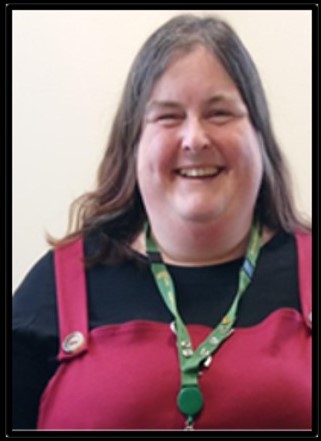
Kathy Bradley: Perceptions of disability over the centuries
December in the UK marks Disability History Month in Diversity Calendar
Perceptions of disability over the centuries
I was really honoured to be asked to write a blog post during Disability History Month. I have a huge passion for both disability and history, particularly medieval history, and having started to research disability through the ages I realised how the perception of disability, and disabled people’s contribution to society, has changed over the centuries.
Starting in the 11th century, we owe our hospital system in the UK to the Christian monks and nuns. The Archbishop of Canterbury set up the first hospital to provide long-term care of people who were too ill or disabled to live in mainstream society when he built St John’s Hospital in Canterbury.
Watch the BSL (British Sign Language) video on disability in medieval hospitals and almshouses.
Moving on to the Medieval period, Leprosy was common and was very much feared.
However, by Tudor times the disease receded and reduced the need for Leper houses. Many were transformed into Alms Houses where rich benefactors provided shelter for the disabled, ill, and poor usually with the hope that this would guarantee their place in heaven.
People with learning disabilities were valued for their directness and humour and were well cared for at the Tudor court. One in particular, William Sommers is known to have been able to speak freely with King Henry VIII who loved his humour. William voiced many truths that Henry would have found uncomfortable. William was known as a ‘natural fool’ and needed someone to care for him. The King employed William Seyton who continued to be paid to care for Somers after the King died.

Will Sommers. Wikimedia Commons.
The first known wedding in sign language is recorded in 1618. Thomas, a blacksmith, was a ‘dumbe person’ and he indicated his willingness to marry Sara by making ‘the best signes he could, to show that he was willing to be married’.
During the 19th century many people with disabilities were moved into asylums or workhouses and stayed there for the entirety of their lives. The 19th-century shift towards institutionalisation and workhouses for people with disabilities is a darker period in history. The mass confinement of individuals labelled as ‘idiots and lunatics’ in asylums and workhouses reflects a societal view that regarded disability as something shameful.
It was the First World War that started to challenge the perception of disability. Vast numbers of soldiers were coming home permanently disabled by their wounds. Over 40,000 men had lost limbs in the fighting. This saw the development of new light aluminium prosthetic limbs and plastic surgery started to help patients who had been burnt in the conflict.
My reflections
I find the thought about whether a disabled person could contribute to society an interesting one. It’s crucial to recognise that individuals with disabilities, like anyone else, have diverse abilities and talents that can contribute significantly to society. Addressing these concerns requires a multifaceted approach involving social, economic, and policy considerations.
Equitable cost of living: It’s important for society and policymakers to acknowledge the added financial burden that individuals with disabilities often face due to the higher costs associated with living with a disability. Ensuring equitable cost of living payments and support systems is a fundamental step toward addressing this issue.
Inclusive policies: The creation of policies that directly impact disabled individuals should involve collaboration with the affected community. Including their perspectives in the policymaking process helps ensure that the policies are not only well-informed but also inclusive and respectful of the diverse needs within the disabled community.
International collaboration: Working with international organisations like the UN on disabled people’s rights is crucial for establishing global standards and best practices. Such collaboration can foster a more inclusive and supportive environment for individuals with disabilities, transcending national boundaries.
Combatting ableism: Increasing levels of ableism and hate crimes against disabled people are deeply concerning. Education and awareness campaigns can play a vital role in challenging stereotypes, reducing stigma, and fostering a more inclusive society. Advocacy for anti-discrimination laws and policies can also contribute to creating a safer and more equitable environment.
Promoting accessibility: Making public spaces, transportation, and digital platforms more accessible is essential for enabling the full participation of individuals with disabilities in various aspects of life. This includes not only physical accessibility but also ensuring that information and communication are accessible to everyone.
Addressing these issues requires a collective effort from individuals, communities, and policymakers. By fostering a more inclusive and supportive society, we can work towards ensuring that disabled individuals have the opportunities and resources they need to contribute to and participate fully in all aspects of life.
By Kathy Bradley Equality Diversity and Inclusion Partner, Directorate of Equality, Diversity and Inclusion






0 Comments